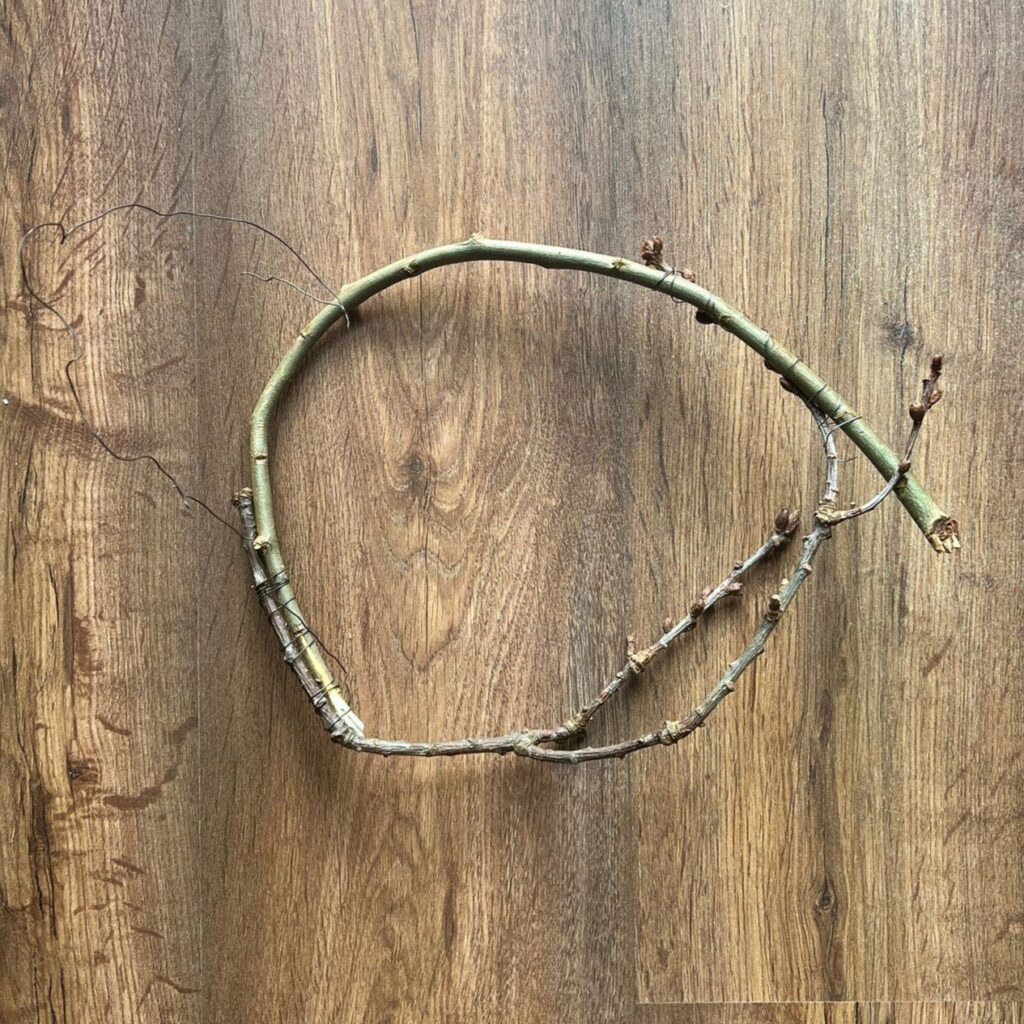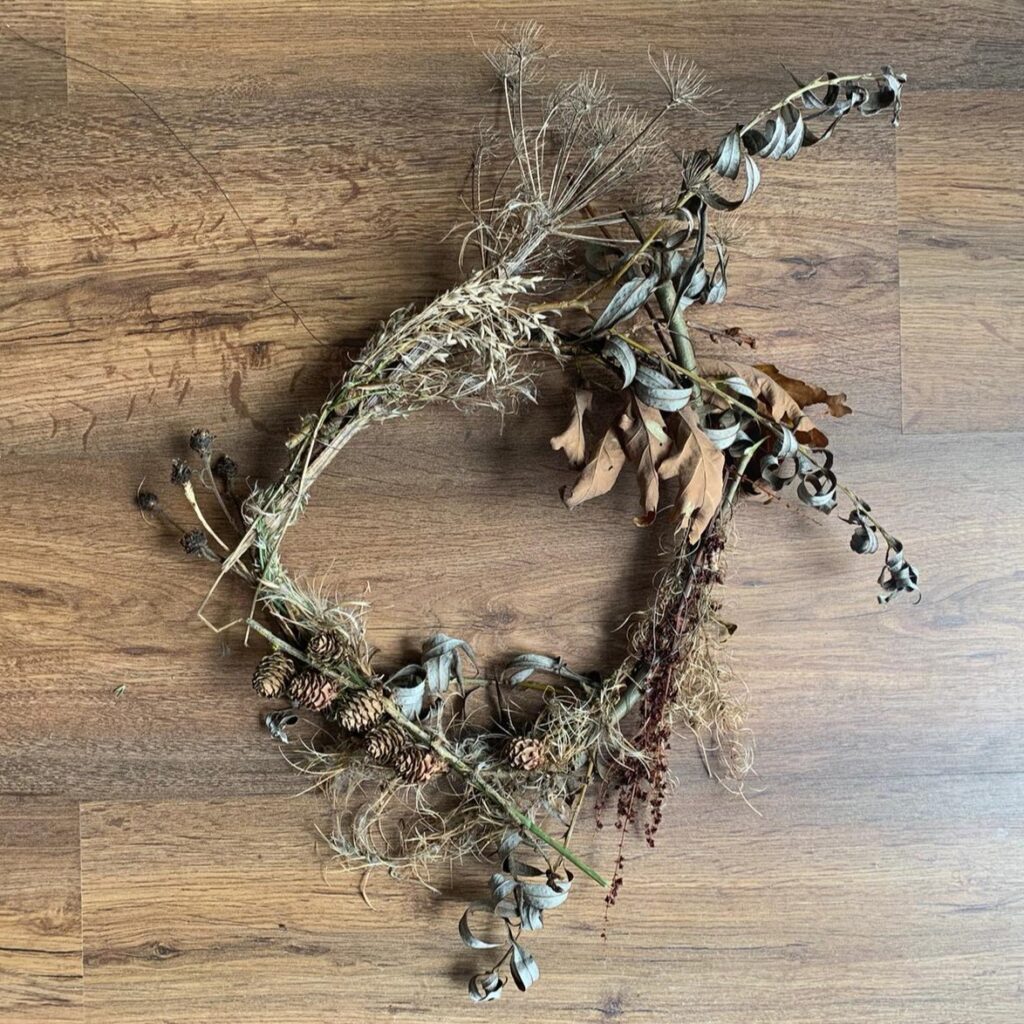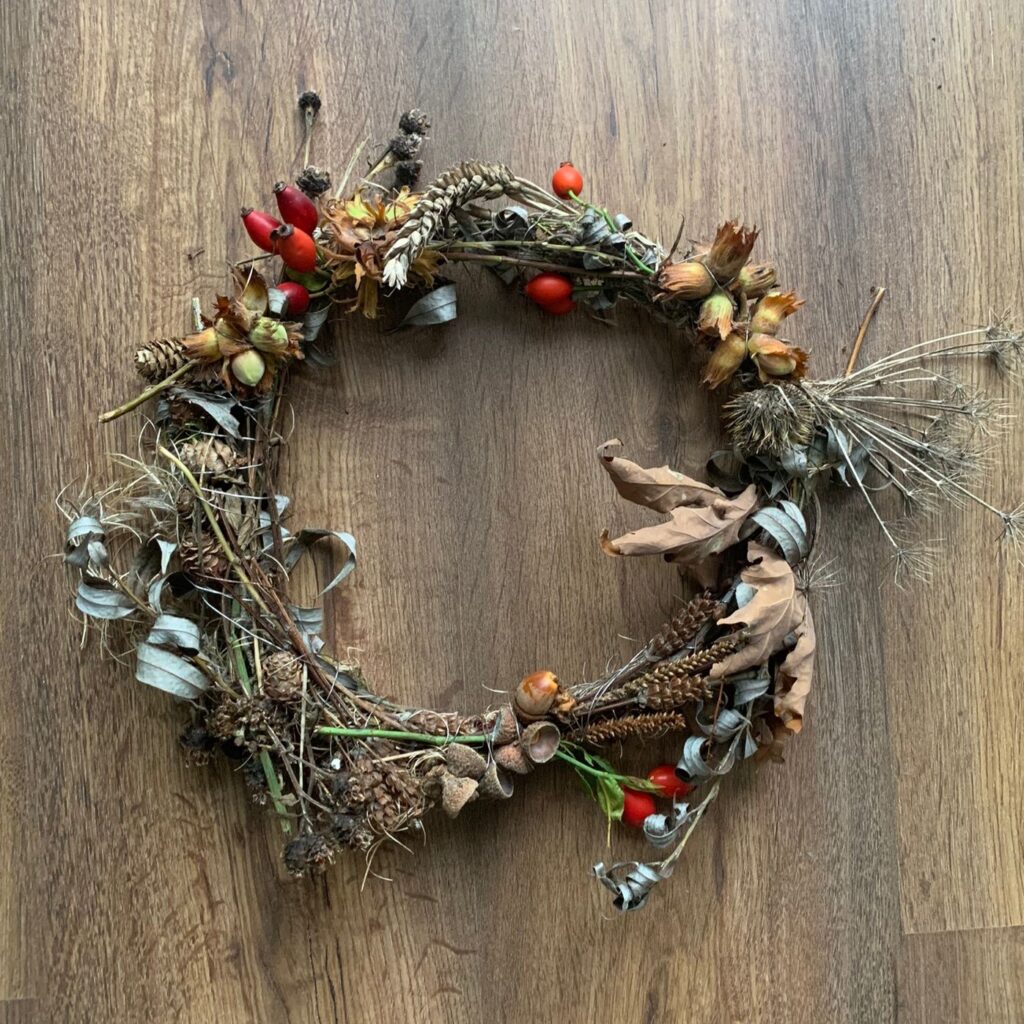
Making a plastic-free Autumn wreath
Spring and summer are the seasons usually associated with flowers, but there is still plenty of colour and texture to by found in Autumn if you go with an open mind.
Foraging for an Autumn wreath is a great way to make a plastic-free decoration for your home as we approach the festive season, with the added wellbeing bonus of spending time outdoors. This project can be completed in a morning if you are speedy, or over a weekend if you want to take a more leisurely pace. If you are really short on time, you can skip the wreath-making part and arrange your wild trophies in a vase – they will still look impressive.
Before you go foraging
There are a few general best practice rules to bear in mind when doing any king of foraging:
· Stick to public rights of way and footpaths.
· Avoid damaging surrounding plants and habitats.
· Leave some for other people and for wildlife – for this wreath I took no more than three twigs / leaves / seed heads from any one point along our walk.
· Don’t damage root systems by pulling up the entire plant.
· Be mindful of where dogs and other animals might have relieved themselves.
What you will need
When foraging to make a wreath, you will want to collect a variety of clean, dry material in the categories listed below. Going for branches and leaves that have already turned means the wreath won’t wilt over time as the plants dry out. Look out for a variety of colours – shades of tan, hazel, maroon, gold and red will add up to an eye-catching wreath.
Structure: Thin, bendy sticks, 30-40 cm in length. You will need two to four.
Fillers: Seed heads, grasses, leafy branches.
Detail: Cobnuts, acorns, rose hips, thistle heads, pinecones, conkers.
The only other thing you will need to construct your wreath is a few meters of thin craft wire. If you have old wires in your house that can be repurposed, even better.
Step one: Build your structure

Starting with your thin sticks, bend them into a circle shape, aiming for 20-30cm diameter. You will want the ends of each stick to overlap by 4-5cms. Secure the overlap by twisting craft wire tightly round both sticks. It doesn’t have to be perfectly circular, and the wreath will become stronger as you build layers and secure with more craft wire.
Step two: Fill out your structure
Your next layer will give your wreath more volume and body. Using your bushier branches and grasses, add one at a time to your stick structure, wrapping the wire continuously around as you go. You want to create an even coverage, which may take two or three layers to achieve.

Step three: Add your detail
Keep wrapping the wire around your wreath to secure the final bits of detail. Pine cones, acorns, cobnuts and rosehips will all add character, and enhance the festive appearance.

Step four: Hang your wreath
Your final piece will look lovely hanging on your front door or above the fireplace. Alternatively, you could lay if flat and put a candle in the middle to create a table centrepiece – be careful that the flame won’t get too close to the dry leaves!

